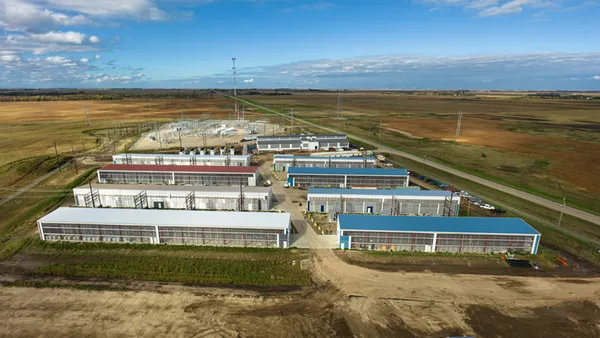Dive Brief:
- Colorado regulators want to see Xcel Energy launch a virtual power plant pilot by the summer, though the utility has warned the project is complicated and the proposed timeline is “aggressive.”
- The Public Utilities Commission of Colorado on Tuesday held a workshop to discuss the VPP effort, as well as gas demand response and neighborhood electrification pilots. The trio of investigations is led by Commissioner Tom Plant, who said he would like to see a gas DR program operational by September and for the VPP to begin enrolling customers in July.
- The PUC wants to utilize VPPs to shift peak load and mitigate electric system capacity constraints, though an October staff report outlined a broader range of potential benefits including helping to address affordability and equity issues, adding to system resource adequacy and introducing competition into the distribution system.
Dive Insight:
The Colorado PUC opened a “miscellaneous proceeding” in September to explore third-party implementation of pilot programs as the state looks to transition to 100% clean electricity generation by 2040. Response to questions about neighborhood electrification were minimal, however, and that project will be taken up in another proceeding, Plant said.
The Tuesday discussion focused on the path ahead for VPPs in Colorado, including what form a pilot might take and how quickly it can be brought to market.
“The company is going to need some reasonable time to digest what we expect might be a fairly complicated list of instructions for creation of a [request for proposals] that we just can't pull off the shelf,” said Tyler Mansholt, assistant general counsel for Xcel and the attorney representing its Public Service Co. of Colorado utility subsidiary in the VPP proceeding.
A timeline proposed by Commissioner Plant would have the utility issuing an RFP in January.
“Expectations that we'll just get a final decision and turn that into a fully fleshed out RFP in just a couple of weeks may be fairly challenging,” Mansholt said.
Despite concerns over the timeline, Xcel officials say they are essentially already working on VPP components. The company is developing a roadmap for a distributed energy resource management system, or DERMS, and is planning a first-quarter RFP for that initiative.
“There are a lot of vendors today that are calling themselves DERMS providers, but in our view, they're really more of a demand response management system provider. Regardless, the capabilities of a DERMS will give us the functionality, I think, to achieve many of the objectives that you're seeking to achieve in this docket,” said Zach Pollock, Xcel’s director of grid strategy and emerging technology.
Xcel, in filed comments, also warned the comission “against too much reliance through an RFP on the concept of a third-party market platform.” A VPP could utilize some existing programs, officials said, such as the utility’s pay-for-performance Renewable Battery Connect platform which pays customers for the use of their storage assets.
The staff report on VPPs argues the systems, made up of aggregated and controllable distributed resources, can be stood up quickly to help utilities decarbonize the grid while lowering customer costs and improving reliability.
VPP’s “provide reliability benefits beyond what traditional power plants can provide,” according to the report. They are “faster to deploy and are more flexible than large fossil power plants,” and while a gas plant might take four years to construct, “some VPPs have started up in months.”
And technological innovations in the management and optimization of distributed energy resources “could change economies of scope and transform the distribution system into an open access platform for third-parties to compete and provide energy services to customers,” the report concluded.
The next round of comments on the VPP project is due to the PUC by Nov. 30, and Plant said he wants the proceeding to result in a December recommendation to the full commission for how to proceed in standing up a pilot.
So far, the proceeding has shown that “a DERMS system has the greatest opportunity for scalability” in managing a variety of different technologies, said Plant.














